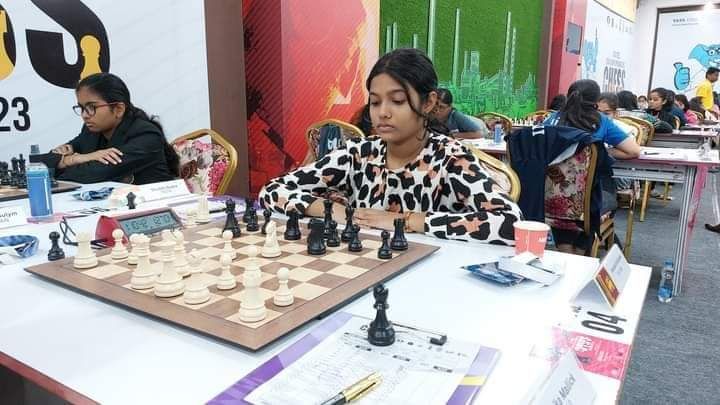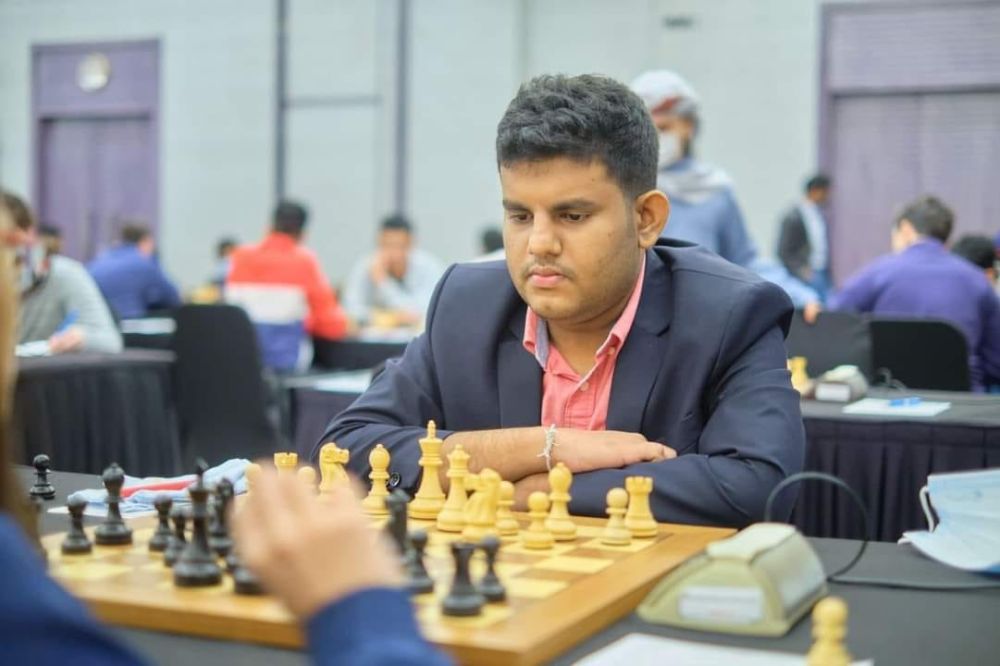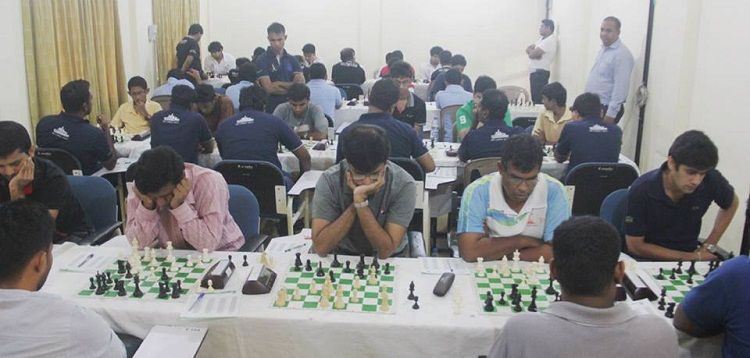 Photograph by : Mr. Ruwan Gunaratne (From left to right Marlon Fernando, Ashoka Ekanayake, Ruchira Amarasinghe, G. Luxman Wijesuriya, Thushan Wickramarachchi)
Photograph by : Mr. Ruwan Gunaratne (From left to right Marlon Fernando, Ashoka Ekanayake, Ruchira Amarasinghe, G. Luxman Wijesuriya, Thushan Wickramarachchi)
A classic battle- Game 2
27 May 2020
by T G M Peiris
Vienna Gambit (An opening you shouldn’t mess with!)
Ruchira Amarasinghe (RT) is one of the strongest chess players from Kandy who became the National Chess Champion of Sri Lanka in 1999. He is an avid chess player produced by the Trinity College and was awarded ‘Trinity Lion’ in 1993 for the game of Chess. The “Trinity Lion” is the most prestigious award a sportsman can achieve at Trinity College, Kandy. Ruchira was a key member of “Passed Pawns Chess Club”, one of the oldest chess clubs in Sri Lanka.
Ruchira Amarasinghe has BSc Engineering (Hons) in Electrical Engineering from the University of Peradeniya and currently he is the Chief Architect of OrangeHRM Inc. If he is back in chess, he will be a fine challenger for the present top players. He had a 2204 peak rating and now he is ranked 21st in the Sri Lankan ranking list with a 2149 FIDE standard rating.
Following an aggressive game was found from Chess Olympiad 1992.
Amarasinghe, R T - Powell, John
Chess Olympiad [Sri Lanka - Jamaica] Manila PHI (6.4), 14.06.1992
1.e4 e5 2.Nc3 Vienna Game Here white chooses an opening with lots of sharp attacking ideas. Usually players find these kinds of openings either in a must-win situation or to take out the opponent from his preparations. On the other hand, the game was played in 1992! where there were no strong engines, chess books, or GM coaching, especially for south Asian countries. Hence, such players are highly commendable. The opening moves lie between King's Gambit and Vienna Game. If I have to point out few top players who played King's Gambit and Vienna Game I would say my father (T D R Peiris) and C K D Fonseka undoubtedly as I've witnessed both of them playing when I was a little kid back in the day. I’ve recognized GWDM Dabarera as a frequent Vienna player among the young generation.
2...Nf6 [2...Nc6 3.f4!? exf4 4.Nf3 g5 Vienna Hamppe–Muzio Gambit]
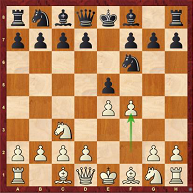
3.f4 [This move transposes to the Vienna Gambit which is quite similar to King's Gambit but can be very dangerous if you try to accept the f-pawn. And here black plays 3...d5 one of the main continuations in Vienna Gambit]
3...d5 [3...exf4?! Black should not accept the f-pawn in Vienna Gambit 4.e5 Qe7? 5.Qe2! Ng8 6.Nf3 d6 7.Nd5 Qd8 8.exd6+ Be6 9.Nxc7+ Kd7 10.Ne5++–]
4.fxe5 [4.exd5 Nxd5 5.fxe5 Nxc3 6.bxc3 Qh4+ 7.Ke2 A very sharp line. Hamppe,K - Steinitz,W [C29] Vienna 1859 0–1]
4...Nxe4 5.d3!? [Here white's best option is 5.Nf3 to stop unnecessary threats and control important center squares.]
[5.Nf3 Be7 6.Qe2 Nxc3 7.dxc3=] 5...Bb4!? [5...Nxc3 6.bxc3 d4] 6.dxe4 Qh4+
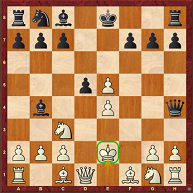
7.Ke2! (The surprisingly white king is safe on e2) Bxc3 8.bxc3 Bg4+ 9.Nf3 dxe4 10.Qd4 Bh5 [10...exf3+? 11.gxf3+–]
11.Ke3 Bxf3 12.Bb5+!? [An interesting choice from white in order to stop Qe1–Qh4 perpetual]
[12.gxf3 Qe1+ 13.Kf4 Qh4+ 14.Ke3=]
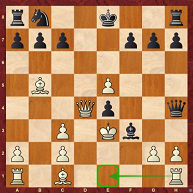
12...c6 13.gxf3 cxb5 14.Qxe4 Qxe4+ 15.Kxe4=
[And the position turned out to be Rooks + Minor piece endgame where white has a bishop and black has a knight. White's bishop is better on e3 while black's knight finds a good outpost on c4. Perhaps bringing knight to e6 might control some important squares]
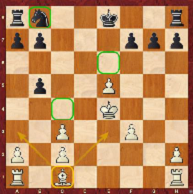
15...Nd7 16.Rb1 Rc8 [16...a6 won't give much for black unless white plays passive. Here 17.c4! gives all the equal chances for white 17.c4! bxc4 18.a4! Nc5+ 19.Ke3 0–0–0 20.Rb4 Rhe8 21.f4 g5 22.Rxc4 gxf4+ 23.Kxf4=]
17.Rxb5 Rxc3?! [Here white can actually take the b7 pawn.]
18.Be3?! [18.Rxb7! Rxc2 (18...Nc5+ 19.Kd4) 19.Ba3+– Black cannot find a safe square for his king. Sooner h-Rook will join the action and simply white is winning!]
18...b6 19.Rb2? [19.Rg1 Rg8 20.Rd5 It's vital to keep your heavy pieces active in such positions. 20...Rxc2 21.f4= even though white lost few pawns, active pieces will guide black to the equality.]
19...0–0?! [Castling is not necessary in this position as the Queens are already swapped off in the middlegame. 19...Ke7!–+]
20.Rd1 Rd8 [20...f5+!? 21.Kf4 Nxe5] 21.Rd3 Rc4+ 22.Kf5 g6+ 23.Kg5 Kg7?! [23...Re8 24.Rd4 Nxe5–+]
24.f4 Nf8 25.Rxd8 Ne6+ 26.Kg4 Nxd8 27.Bd2 Nc6 28.Kg3 Nd4 29.c3 Ne2+ 30.Kf3 Nxc3 31.Rc2 Ne4 32.Rb2 Nc5 33.Be3 Ne6 34.Rd2 Ra4 35.Rg2 Kf8 36.Kg3 Ra3 37.Kf3 Nd4+ 38.Ke4 Nf5 39.Bc1 Ra4+ 40.Kd3 [from 23....Kg7 until this point black improved his position slowly. White held the position with his active Bishop and Rook.]
Here black couldn't really find a clear winning plan and went for 40....b5
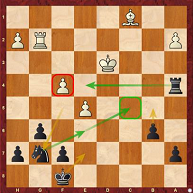
[40...Ng7! 41.a3 Ne6 42.Rf2 Ke7 43.Rf1 Nc5+ 44.Kc3 Re4 45.h3 b5 46.Rd1 Rc4+ 47.Kb2 Na4+ 48.Ka1 h5 49.h4 Nc3 50.Rd6 Ne4 51.Rd1 Rc2 52.Bb2 Rf2 and black is winning]
41.Rc2 Rd4+ 42.Ke2 Re4+ 43.Kd3 Rd4+ 44.Ke2 Rd7?! 45.Be3 Nxe3?
[I would say this is the turning point which led white to hold the draw at the end. Black shouldn't exchange his last minor piece unless he's clearly winning in the rook endgame!]
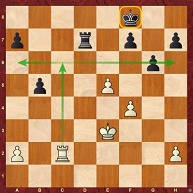
46.Kxe3 Ke7 47.Rc5?! [47.Rc6! Rb7 48.Ra6=] 47...Rb7 48.Kd4 Kd7 49.Kd5 Rb6 50.Rc3 Ra6 51.a3 Ra4 52.Rf3 a6 [52...Ke7! is the best try] 53.f5 gxf5 54.Rxf5 Ke7 55.Rf3 Rh4 56.h3 a5 57.Rc3 b4= 58.axb4 axb4 59.Rc7+ Kf8 60.Rb7 Kg8 61.e6 fxe6+ 62.Kxe6 ½–½
About the author

Globalchess.lk is thankful to Mr.TGM Peiris (Gayan) for writing an article about one of the interesting games of former National Champion Mr.RT Amarasinghe. Gayan is one of the leading coaches in Sri Lanka as well as a top-level active chess player. Becoming the National Rapid Champion of Sri Lanka in 2019 is one of his achievements. We wish him success in his chess career as a coach as well as a chess player. He is the son of former National Champion Mr.TDR Peiris and brother of FIDE Master TSS Peiris.
[Event "Chess Olympiad"]
[Site "Manila"]
[Date "1992.06.14"]
[Round "6.4"]
[White "Amarasinghe, R."]
[Black "Powell, John"]
[Result "1/2-1/2"]
[ECO "C29"]
[PlyCount "123"]
[EventType "team"]
[EventCountry "PHI"]
[SourceDate "2020.03.17"]
1. e4 e5 2. Nc3 Nf6 3. f4 d5 4. fxe5 Nxe4 5. d3 Bb4 6. dxe4 Qh4+ 7. Ke2 Bxc3 8.
bxc3 Bg4+ 9. Nf3 dxe4 10. Qd4 Bh5 11. Ke3 Bxf3 12. Bb5+ c6 13. gxf3 cxb5 14.
Qxe4 Qxe4+ 15. Kxe4 Nd7 16. Rb1 Rc8 17. Rxb5 Rxc3 18. Be3 b6 19. Rb2 O-O 20.
Rd1 Rd8 21. Rd3 Rc4+ 22. Kf5 g6+ 23. Kg5 Kg7 24. f4 Nf8 25. Rxd8 Ne6+ 26. Kg4
Nxd8 27. Bd2 Nc6 28. Kg3 Nd4 29. c3 Ne2+ 30. Kf3 Nxc3 31. Rc2 Ne4 32. Rb2 Nc5
33. Be3 Ne6 34. Rd2 Ra4 35. Rg2 Kf8 36. Kg3 Ra3 37. Kf3 Nd4+ 38. Ke4 Nf5 39.
Bc1 Ra4+ 40. Kd3 b5 41. Rc2 Rd4+ 42. Ke2 Re4+ 43. Kd3 Rd4+ 44. Ke2 Rd7 45. Be3
Nxe3 46. Kxe3 Ke7 47. Rc5 Rb7 48. Kd4 Kd7 49. Kd5 Rb6 50. Rc3 Ra6 51. a3 Ra4
52. Rf3 a6 53. f5 gxf5 54. Rxf5 Ke7 55. Rf3 Rh4 56. h3 a5 57. Rc3 b4 58. axb4
axb4 59. Rc7+ Kf8 60. Rb7 Kg8 61. e6 fxe6+ 62. Kxe6 1/2-1/2


